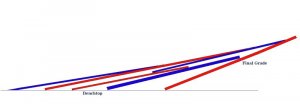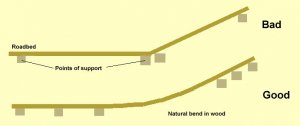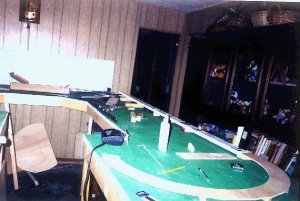Clark,
I have (well had ) an incline beginning on a curve. I didn't have any probs, however, the "strain" on the locos (if I can call it that), is maybe added together. The strain of pulling round the curve, combined with the strain on the incline, so maybe, if you can, lessen the incline on the curve to compensate, maybe?
I found the capacity of the loco to pull a load up an incline, while on a curve to be greatly reduced, compared to similar grade of incline on a straight piece of track.
I have (well had ) an incline beginning on a curve. I didn't have any probs, however, the "strain" on the locos (if I can call it that), is maybe added together. The strain of pulling round the curve, combined with the strain on the incline, so maybe, if you can, lessen the incline on the curve to compensate, maybe?
I found the capacity of the loco to pull a load up an incline, while on a curve to be greatly reduced, compared to similar grade of incline on a straight piece of track.




